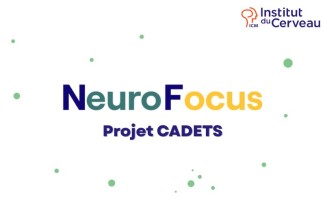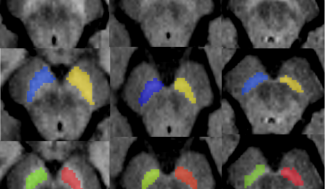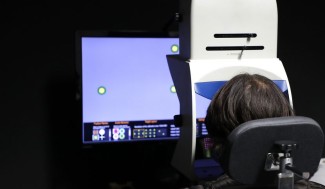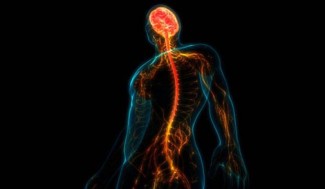Discover the CADETS project, which has identified the brain mechanisms responsible for improving symptoms in some adolescents with Tourette’s syndrome.
What is Gilles de la Tourette Syndrome?
Le syndrome Gilles de la Tourette se manifeste principalement par des tics moteurs et vocaux. Ces tics sont des mouvements ou des sons involontaires, qui échappent au contrôle de la personne. Ils peuvent apparaître dès l’enfance et évoluer avec le temps.
Gilles de la Tourette syndrome is mainly manifested by motor and vocal tics. These tics are involuntary movements or sounds, beyond the control of the person. They can start in childhood and evolve over time.
The best known symptoms
The most publicized symptom is coprolalia, i.e. uttering insults or big words without being able to hold back. However, this symptom affects only about 10% of patients. Most live with other forms of tics, which are less visible but sometimes just as disabling.
Common Associated Disorders
Tourette’s syndrome is not limited to tics. It is often accompanied by obsessive compulsive disorder (OCD) and attention deficit hyperactivity disorder (ADHD). These co-morbidities can make everyday life even more difficult, especially at school or in social interactions.
Adolescence: a crucial stage
Adolescence marks a key period in the development of the syndrome. Researchers observed that:
- For almost half of patients, symptoms improve markedly at this time, sometimes even disappearing.
- For more than a quarter of patients, tics remain very severe and are accompanied by persistent psychiatric disorders. These difficulties can complicate school, work, family life and even increase the risk of premature death.
This difference in the course of the disease raises a major question: why some teenagers experience a decrease in symptoms while others continue to experience symptoms into adulthood?
The CADETS project seeks to answer this question.
The CADETS project: monitoring the evolution of the syndrome
At Paris Brain Institute, the CADETS project developed by the MOV'IT team, from movement to cognition: studies of motor disorders, was set up to better understand this phenomenon. The researchers followed 60 teenagers, aged 13 to 18, for several years.
Behavioural testing
The young participants were tested regularly to assess their symptoms and to observe their progression over time. These data allowed a better characterization of the differences between those with improved symptoms and those with persistent symptoms.
Brain Imaging
In parallel, the researchers used magnetic resonance imaging (MRI) to analyze brain maturation. This technique made it possible to study neural connections between different brain regions involved in movement control.
Major Discoveries in the Brain
The results of the CADETS project have highlighted key mechanisms that explain why symptoms persist or disappear in adolescence.
The role of GABA
In patients with persistent symptoms, the investigators observed a decrease in the activity of GABA-utilizing neurons. GABA is an essential chemical messenger that blocks nerve flow. Without this natural brake, the balance between excitation and inhibition in the motor system is upset, resulting in tics.
Connectivity between putamen and motor cortex
In contrast, in patients with improving symptoms, researchers have found a strengthening of the connections between the putamen, a small structure deep in the brain, and the motor cortex, the region that controls movement. This increased connectivity allows the brain to better suppress unwanted movements.
Towards new therapeutic avenues
These findings pave the way for new strategies to treat Gilles de la Tourette syndrome. In particular, two approaches are emerging:
- Target neurons with GABA, to restore the balance between excitation and inhibition in the motor system.
- Strengthen connections between putamen and motor cortex to improve movement control and reduce tics.
These approaches have the potential to provide new opportunities and improve quality of life for patients in the future.
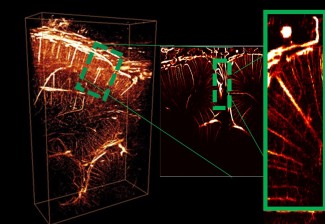
The team aims to investigate various aspects of motor and cognitive control, particularly inter and intra-subject variability in developmental and acquired disorders and in genetically related animal models.
Read more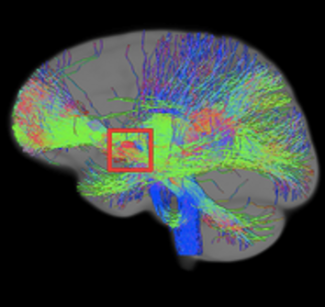
Tourette's syndrome (TS)
Tourette’s syndrome (TS) was first identified in the 19th century by French neurologist Georges Gilles de la Tourette. It is a neuropsychiatric disorder with a genetic component characterised by sudden, brief and intermittent movements (motor tics)...
Read more
